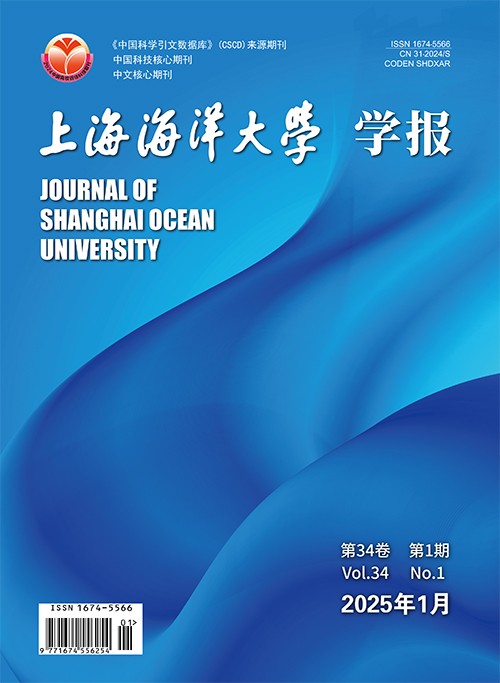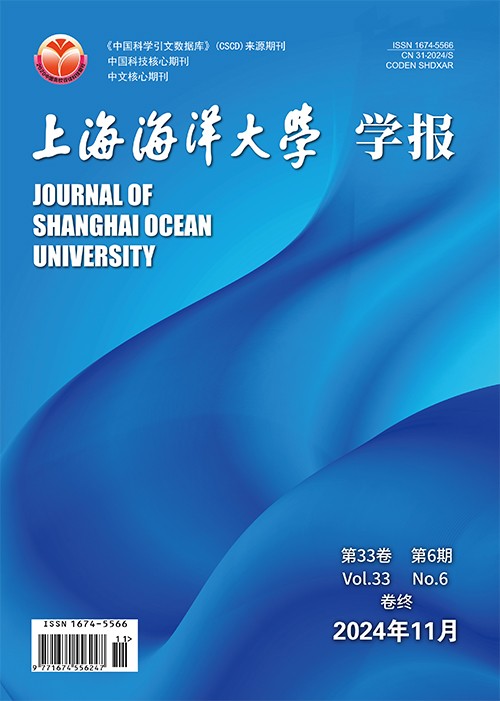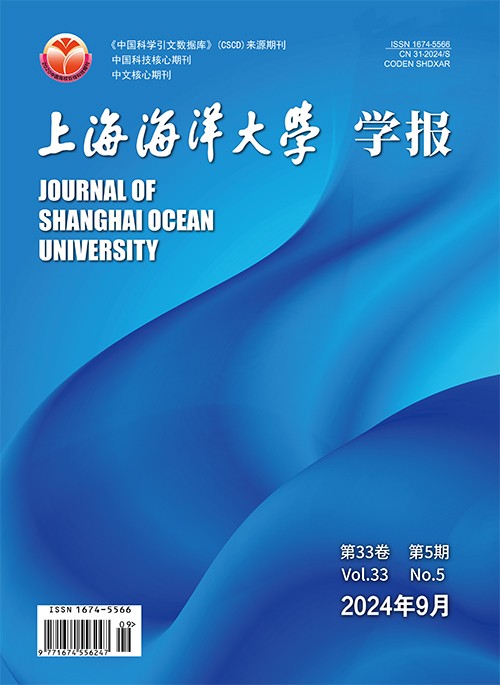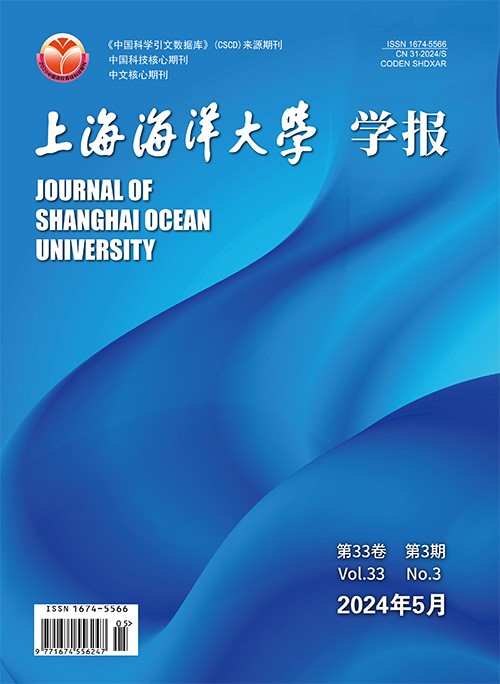 News More+
News More+
- Call for Papers - Special Issue of Water Environmental Protection
- Journal of Shanghai Ocean University Awarded "Top 100 S&T Journals of Universities"
- Journal of Shanghai Ocean University Achieved Highest IF of CNKI in 2021
- Journal of Shanghai Ocean University Ratedin Q1 of China Science and Citation Database (CSCD-JCR) for the First Time
 Download Center More+
Download Center More+
 Journal Information
Journal Information
-
2025, Doi: 10.12024/jsou.20250104768
Abstract:
In the wave of Industry 4.0, as a national strategic industry, distant-water fisheries is facing the challenge of transformation. This study aims to explore how to use the concept of Industry 4.0 and technological innovation to promote the high-quality development of distant-water fisheries, ensuring sustainable use of fishery resources and the coordinated development of social economy and Marine ecology. By providing an overview of the development of Industry 4.0, this paper analyzes the current status and existing issues in the technological advancement of China's distant-water fisheries. Subsequently, the concept of distant-water fisheries 4.0 is proposed, and its core characteristics are elaborated. Finally, the countermeasures and suggestions are put forward for the development of distant-water fisheries 4.0 science and technology, and puts forward the technical framework and research content of oceanic squid fishery 4.0 as example. The existing problems were identified, and targeted measures and suggestions were proposed. Research suggests that distant-water fisheries 4.0 aims to deeply optimize distant-water fisheries production processes, enhance the production efficiency of all links of the industrial chain, ensure the quality of aquatic products, rational utilization of fishery resources, realize scientific conservation and management of fishery resources and promote high-quality development of distant-water fisheries by integrating advanced technologies such as information technology, big data, the Internet of Things, and artificial intelligence. To achieve this goal, the study suggests that strengthening investment in scientific and technological innovation and research and development, promoting the construction of information infrastructure, strengthening talent cultivation and international cooperation are needed which are guided by the concept of pelagic fisheries 4.0 in order to promote the transformation and upgrading of China's distant-water fisheries, and promote the construction of new quality productivity of distant-water fishery.
-
WANG Weijie, WAN Rong, QIAN Weiguo, KONG Xianghong
2025, Doi: 10.12024/jsou.20241204733
Abstract:
Light-induced fishery has a long history of development. After more than 60 years of development and evolution, modern Light-induced fishery in China has become one of the most important fishing methods at present. The rapid development of Light-induced fishery not only makes the offshore phototactic mid-upper layer fish resources be effectively utilized, but also provides technical support for the active development and utilization of oceanic high seas fishery resources, and to a certain extent, alleviates and protects the bottom fishery resources and marine ecological environment in China's offshore areas. However, at the present stage, some negative phenomena such as the competitive growth of the total light power and the increase of non-target catches are also common in Light-induced fishery, resulting in problems such as energy waste and decreased production efficiency. Therefore, how to use fish aggregation lights scientifically and efficiently has become an urgent issue to be solved. Therefore, centering on the light field distribution of fish aggregation lights in Light-induced fishery, this paper makes a comprehensive and in-depth systematic review, summary and technical outlook around the key research results such as the relationship between light field distribution and photo-induced fisheries, the formation of mechanisms of the light field distribution of fish aggregation lights and the algorithms and models of light field distribution, in order to provide reference for relevant research and jointly promote the sustainable development of Light-induced fishery.
-
ZHENG Linbin, LEI Lin, WANG Jintao
2025, Doi: 10.12024/jsou.20241004678
Abstract:
In order to understand the major tuna catches in the Western and Central Pacific Ocean, a retrospective analysis was conducted to clarify the spatial and temporal variations in the major tuna catches in the Western and Central Pacific Ocean by collecting data on tuna fisheries provided by the Western and Central Pacific Fisheries Commission (WCPFC). The results show that the changes in the annual production of major tunas in the Western and Central Pacific can be divided into three periods, including the fishery start-up period, when the fishing range was small, longline fishing was dominant, and the production was concentrated in the near-shore high-yield area, and the spatial scope of pelagic fishing was restricted; the fishery expansion period, when purse-seine fishing was introduced, which led to the expansion of the fishing range to the middle of the Pacific Ocean, and to deeper and more distant waters; and the fishery stabilization period, when the fishing technology was modernized, purse-seine fishing dominated, and high-yield fishing grounds were distributed. During the period of fishery stabilization, the fishing technology was modernized and dominated by purse-seine fishing, the distribution of high-yield fishing grounds was clear, and the fishing range tended to be fixed. The study also focuses on analyzing the fishery production, major species caught, spatial and temporal distribution of operations, and trends in production in the major Western and Central Pacific tuna-producing countries and regions (Japan, Korea, Taiwan Province of China, Papua New Guinea, the United States, and Chinese mainland), and discusses the possible impacts of multiple factors, including natural, economic and policy factors, on tuna production. This study may provide a basis for the scientific management and conservation of tuna resources, and provide a reference for the promotion of marine biodiversity and the sustainable management of global tuna resources.
-
LIU Yuqing, WU Shiteng, SONG Liming, FU Zhou, ZHANG Zichen
2025, Doi: 10.12024/jsou.20241104717
Abstract:
The research and development of automated fishing equipment is a key factor in promoting the high-quality development of offshore fishing. In order to improve the efficiency and quality of tuna fishing in offshore operations, this study proposes an intelligent throwing-rope control system based on the hook depth model for south Pacific albacore tuna (Thunnus alalunga).The system employs a fuzzy PID control method that integrates real-time data collected by sensors deployed on operating fishing vessels, and dynamically adjusts the rope throwing speed through a PLC controller to ensure that the hook depth matches the habitat depth of the target fish species.The study first validated the effectiveness of the fuzzy PID control method in the intelligent throwing-rope control system through simulation and verification experiments, and then deployed the system for sea trials on the "Zhongshui 747" fishing vessel owned by CNFC Overseas Fishery Co., Ltd., comparing the rope throwing speed control precision, stability, hook depth, and fishing outcomes between the intelligent system and traditional manual operations. The results are as follows: (1) The rope throwing speed can be automatically adjusted to the optimal speed based on the ship's speed, control the steady-state error range of the ropethrowing speed to around 2%; (2) The average depth of the deepest hook was 230.20 m, and 53.57% of the hook depths between the two floats coincided with the albacore tuna's feeding depth; (3) The hook rate of albacore tuna increased by 31.85% and the target catch body mass range increased from (14, 18] kg to (18, 22] kg, improving the catch quality. This study shows that the intelligent throwing-rope control system outperforms traditional manual operations and the intelligent throwing-rope control system can effectively improve fishing efficiency and catch quality for target tuna species. This study provides a scientific basis forthe intelligent control of tuna fishing equipment, driving technological innovation and intelligent upgrades in pelagic fishing equipment.
-
TANG Hao, CAI Taocheng, HU Fuxiang
2025, Doi: 10.12024/jsou.20241104694
Abstract:
Different marine fish species exhibit varying sensitivities to light response.To grasp the law of fish's tendency and avoidance response to light. This paper reviews the behavioral responses of marine fishes and selected freshwater fishes, particularly pelagic economic species, to different light characteristics such as spectral frequency, light intensity, and light duration. The findings indicate the following:Fish display distinct preferences for different light colors. Pelagic fish tend to be attracted to red and yellow light wavelengths, while demersal fish show a preference for blue and green light wavelengths;Light intensity decreases with depth in the water column, making the low-light environment of the deeper waters more attractive to pelagic fish;Light intensity has a significant effect on fish growth and development, as well as on their stress behaviors and swimming patterns;With prolonged light exposure, the behavioral changes in fish primarily exhibit a triphasic pattern: an initial stress response, followed by a photoadaptation phase, and culminating in behavioral stabilization;It is crucial to strengthen research on the mechanisms behind fish behavior in response to light sources and fishing gear. By harnessing fish's behavioral responses to light, we can develop strategies to attract or repel fish, thereby laying the foundation for eco-friendly fishing practices.
-
XIA Chao, CHEN Xinjun, LIU Bilin, KONG Xianghong, YE Xuchang
2025, Doi: 10.12024/jsou.20240604587
Abstract:
In order to achieve efficient identification and classification of tuna longline catches and to improve the accuracy of fishery resources monitoring, this study explores a fish image recognition method based on convolutional neural network. The experiments were conducted using image data of three economic fish species and ten bycatch species caught by the Songhang of Shanghai Ocean University during the high seas survey in the western and central Pacific Ocean, and a convolutional neural network (CNN) based on a single shot multiBox detector (SSD) was used to classify and recognise the images. The training dataset is optimised by comparing and analysing the local fish images with the overall image dataset to improve the classification performance of the model. The experimental results show that the classification accuracy of the improved fish image dataset on the SSD model reaches 91.6%, which is a 6.2% improvement compared to the original dataset. The study shows that using the optimised dataset, the SSD model can significantly improve the recognition accuracy of tuna longline catches with better stability and adaptability. This study provides an effective technical path for fishery resource monitoring based on convolutional neural networks, especially in improving the automatic classification and identification accuracy of tuna longline catches, which is of great significance for promoting sustainable fishery management and marine ecological protection.
-
ZHANG Yining, LIU Bilin, DAN Yating, LI Jianhua
2025, Doi: 10.12024/jsou.20240304440
Abstract:
To understand the fishery biology of Symbolphorus californensis, the age and growth were analyzed in 175 samples collected in the high seas of Northwest Pacific Ocean from June to July 2022 through the observation of otolith microstructure. The results showed that the sagittal otolith of S. californensis is elliptical, with a sinuate dorsal margin, shallow sulcus, and rounded to oval cauda. The otolith microstructure along sagittal section exhibited three of the growth zones: CZ, MZ and EZ, respectively with 45-50、38-45 and 157-465 daily growth increments. The sum of daily growth increments in the three zones determined an age range (lifespan) of S. californensis specimens as 242-550 days, with the dominant group from 301 days to 400 days (91.46%). By obtaining the age in days of each specimen, the back-calculated hatching date of specimens collected was determined as from March to August of last year with a peak in May to June. The AIC analysis indicates that the optimal growth equation is the von Bertalanffy growth model, with the fitting as: Lt=146.325×{1-exp[-0.01×(t-229.392)]}.In addition, S. californensis of Northwest Pacific Ocean was found to have daily growth increments of its sagittal otolith, which also exhibited lunar periodicity in the deposition of increments, with growth increments during the full moon period. The results of this study reveal its life history characteristics and provide scientific basis for future resource utilization.
-
WANG Xiaodong, LYU Lixin, ZHAO Hengquan, ZHONG Junsheng
2025, Doi: 10.12024/jsou.20240704590
Abstract:
To understand its osteological development during early stage, 33 larval specimens of Thunnus albacares (9 preflexion larvae, 12 flexion larvae, 12 postflexion larvae, body length: 3.1-8.0 mm) were collected by horizontal trawling at the surface layer by a larval net (1.3 m in diameter, 0.5 mm in mesh size) in the Philippine Sea from August 15th to September 9th, 2022. The specimens were stained and cleared for both cartilage and bone to evaluate their vertebral column and appendicular skeleton development in T. albacares. The results show that the fins were developed in following sequence: pectoral fin, caudle fin, the first dorsal fin and pelvic fin, the second dorsal and anal fin, and finally, finlets. Centrum was formed in a posterior direction. Neural arches were formed in a posterior direction at anterior part of the body and in both anterior and posterior at the middle part of the body. Haemal arches proceeded both anteriorly and posteriorly. Hypural 1 and 2 were fused, and then jointed with the parhypural by cartilage. Hypural 3 and 4 were fused at both ends. Hypural 5 was dissociated. There are 18 precaudal vertebrates, 21 caudal vertebrates, 1 parhypural, 5 hypurals and 2 erpurals in 8.0 mm specimen. The fusions of parhypural and hypurals could enhance the swimming ability for T. albacares. This study can be used as a basis for the fish identification and provides an evidence for the formation of the drift mechanism of T. ablacares larvae.
-
LI Yuxi, JIANG Shouwen, WU Zhichao, ZHAI Wanying, XU Qianghua
2025, Doi: 10.12024/jsou.20240904628
Abstract:
To explore the differences in element accumulation between two Antarctic fish species, this study utilized inductively coupled plasma mass spectrometry (ICP-MS) to determine and compare the contents of nine trace elements: iron (Fe), chromium (Cr), manganese (Mn), copper (Cu), zinc (Zn), arsenic (As), selenium (Se), cadmium (Cd), and mercury (Hg) in three tissues (brain, heart, and duodenum) of both species. The results show that the content of Fe, Cu, As, Hg, Cd and other elements in the brain of Chionodraco hamatus was significantly lower than that of Trematomus bernacchii (P<0.05); The content of Fe, Cu, Cd and Hg in heart tissue was also significantly lower than T. bernacchii (P<0.05); However, the amount of Hg, Mn, As, and Se in the duodenum of C. hamatus was significantly higher than T. bernacchii (P<0.05), The content of Fe, an important constituent element of hemoglobin, in the brain and heart of the C. hamatus is significantly lower than T. bernacchii. Lack of hemoglobin should be the main cause of this difference. The heavy metal content in the duodenum of the C. hamatusis significantly high, which is speculated to be related to its benthic lifestyle, making it more prone to accumulating heavy metals.Compared with fish in other waters, the content of Cr, As, Cd, Hg, Mn and Cu in the two Antarctic species were higher than that of other fish,which may reflect a certain degree of heavy metal pollution in some Antarctic waters.
-
TANG Fenghua, BA Yaoji, XIAO Ge, SHI Yongchuang, ZHAO Guoqing, GUO Ai, ZHANG Heng, CUI Xuesen, CHEN Feng
2025, Doi: 10.12024/jsou.20241004662
Abstract:
In order to analyse the inter-annual variation in the population structure and composition of the purpleback flying squid (Sthenoteuthis oualaniensis) and its main environmental influences. A productive fishery survery was conducted on two consecutive cruises from December 2019-February 2020 and September-November 2020 in the open ocean waters of the northwestern Indian Ocean from 60°E to 65°E, 15°N to 20°N, to collect samples of the Indian Ocean purpleback flying squid was carried. During the survey, we obtained 1 430 purpleback flying squid samples, with a total of 748 sexes identified, and a total sex ratio of male to female of 1∶0.97.We analyzed the biological characteristics of the purpleback flying squid, like mantle length, body mass, sex, sexual maturity and feeding intensity, by means of the SPSS statistical software. The average mantle lengths of females and males were 248 mm and 207 mm, respectively, and the dominant mantle length group was 220-250 mm. The Logistic curve was employed to fit the mantle length at the first sexual maturity of the purpleback flying squid. During the first voyage, the mantle length at the first sexual maturity for female individuals reached 361 mm, while that for male individuals was 171 mm. In the second voyage, the mantle length at the first sexual maturity of female individuals measured 202 mm, and that of male individuals was 153 mm. The proportion of individuals with gonadal maturity stages Ⅲ, Ⅳ and Ⅴ (sexual maturity) was as high as 66.53 %, with 57.37 % of females and 75.20 % of males in the mature group. Meanwhile,by utilizing the marine environmental data acquired from remote sensing satellites, the relationship between the distribution of the proportion of mature groups of purpleback flying squid and the main environmental factors was analyzed. It was considered that their growth and development were influenced by crucial factors in the marine environment, namely sea surface temperature (SST), sea surface temperature anomaly (SSTA), chlorophyll-a mass concentration (Chl.a), and so on.In addition, the survey showed that the proportion of sexually mature groups of purpleback flying squid was 25.93% higher in the December 2019-February 2020 cruise compared to the September-November 2020 cruise. The above conclusions provided a reference basis for the later sustainable development and utilization of purpleback flying squid resources in the northwestern Indian Ocean waters.
-
FAN Qingwang, GE Yujing, LI Gang, CHEN Xinjun, GONG Yi
2025, Doi: 10.12024/jsou.20241004655
Abstract:
To explore the changing patterns of the dietary habits and migratory patterns of the jumbo squid (Dosidicus gigas) and their potential relationship with abnormal climate events and variations in fishing intensity.In this study, we selected D.gigas from the Central Eastern Pacific Ocean as research object, and evaluated the sequentialstable isotope values of δ13C and δ15N in sectioned fragments of gladius. Using climate and environmental indices, the inter-annual variations in the ontogenictrophic patterns of the D.gigas were compared and their causes were explored.The results indicated that the δ13C values of 2019 D. gigasgladius significantly increased with individual growth, and the trophic niche narrowed, which may be related to the migration from equator to the southern hemisphere after the El Niño occurred. Differences were also found in the trophic patterns of the D.gigascollected in the La Niña periods, i.e., 2018, 2020, and 2021. In 2018, the δ13C and δ15N value of D.gigasgladius significantly increased with individual growth, indicating a southward migration to higher latitudes in the Southern Hemisphere. However, there was no significant change in the trophic niche, suggesting a relatively stable food source for D.gigas. During the implementation of seasonal moratorium in the high seas in 2020 and 2021, there were no significant changes in δ13C and δ15N values with individual growth, while higher trophic niche width during the later stages of life span. This indicated that these individuals had narrow migratory range, stabledietary, and high ecological resilience. These findings illustrate the sensitivity of D.gigas to abnormal climatic events and variation of fishing intensity. However, further research is needed to determine the extent of each factor's influence.
-
GOU Qianbo, WANG Congcong, LI Gang, LIANG Xuhong, PENG Zukun
2025, Doi: 10.12024/jsou.20241004676
Abstract:
To explore the genetic diversity of Dosidicus gigas in the Southeastern Pacific Ocean and its relationship with environmental factors, this study analyzed the genetic diversity of three phenotypic groups (large, medium, and small) and the impact of environmental factors using mitochondrial COⅠ gene data, redundancy analysis (RDA), and Mantel tests. The results showed that the overall haplotype diversity (Hd) of D. gigas populations was 0.455, while nucleotide diversity (π) was 0.001 1, indicating high Hd and low π. The genetic differentiation coefficient (Fst) between populations was less than 0.05, gene flow (Nm) was greater than 1, and within-group variation accounted for 99.14% of the total. Genetic data suggested that the populations underwent a historical expansion event approximately 46 700 years ago. RDA and Mantel test results indicated a weak correlation between geographical distance and mean genetic distance, while latitude (lat), sea surface temperature (SST), sea surface salinity (SSS), and pH were significant environmental factors influencing the genetic diversity of D. gigas populations (P<0.05). Furthermore, the distribution of different phenotypic groups was influenced by distinct environmental factors. The study concluded that there was no significant genetic differentiation among the three phenotypic groups of D. gigas, but environmental factors had a significant impact on their genetic diversity. This research provides valuable reference data for the conservation and management of D. gigas populations.
-
SU Risheng, WEI Yongliang, TANG Zeyan, PANG Denglian, ZHANG Chunling
2025, Doi: 10.12024/jsou.20240404524
Abstract:
The effect of marine mesoscale processes on spatial variation of fisheries is an important part of fishery resources assessment.In order to clarify the response relationship between fishery resource abundance in the Kuroshio-Oyashio confluence region (145°E-165°E, 35°N-45°N) and mesoscale eddies, this study utilized data from mid-pelagic trawl catches and satellite altimetry collected during research cruises in the Northwest Pacific from June to August 2021-2023 by the "Songhang" of Shanghai Ocean University research vessel. The study investigated the relationship between catch density and environmental factors as well as eddies.The results indicate a significant spatial correlation between sea surface temperature, chlorophyll-a mass concentration, and the distribution of fishing density in the fishing grounds. These factors predominantly influence the resource abundance of middle and pelagic fishery. The average fish catch yield is higher in the sea area north of 40°N compared to those south of it. Within 1-2 times the radius of cyclonic eddies, there is a notably positive abnormality in chlorophyll-a mass concentration. Conversely, in anticyclonic eddies, there is a positive abnormality in chlorophyll-a mass concentration in the northeastern part and reduced mass concentrations elsewhere.Within a radius of two times the eddy, fish aggregation was favored to the south of the cyclonic eddy and to the north of the anticyclone. Although the cyclonic eddies are nutrient eddies, their accompanying upwelling leads to low water temperatures, which are not favorable for fish aggregation. Marine organisms in the Kuroshio-Oyashio confluence region tend to aggregate in the southern part of the cyclonic eddy and the northern part of the anticyclonic eddy.This study can provide a scientific basis for short-term fishery forecasting and prediction of the center of gravity of the fishery in the Northwest Pacific Ocean, while the fishery changes caused by the inter-annual dynamic difference of the Kuroshio Current axis still need to be further investigated.
-
LYU Shuo, TONG Jianfeng, ZHU Zhenhong, XUE Minghua, QIU Yue, LI Boxuan, LIU Bilin
2025, Doi: 10.12024/jsou.20240504565
Abstract:
Small pelagic fish are important fishery resources in the Northwest Pacific, and their resource fluctuations can have a significant impact on the structure and function of the marine ecosystem. In order to understand their spatial and temporal distribution characteristics and resource status, this study is based on the 2023 acoustic survey data, combined trawl sampling to analyze the spatial and temporal distribution of small pelagic fish resources in the Northwest Pacific in summer 2023. The results showed that trawl catch species mainly included European pilchard (Sardina pilchardus), Japanese anchovies (Engraulis japonicus),Chub mackerels (Scomber japonicus), Australian mackerels (Scomber australasicus), and lanternfish (Myctophidae)with average resource densities of 166.82 t/n mile2, 0.078 t/n mile2, 18.13 t/n mile2, 2.76 t/n mile2and 0.769 t/n mile2, respectively.The study showed that small pelagic fish exhibited higher resource densities in low-latitude waters, primarily at the confluence of the Kuroshio Current and Oyashio Current. Vertically, they were mostly concentrated in the 10-50 m water layer. The nautical area scattering coefficient in night was significantly higher than daytime (P<0.001).This research provides valuable scientific insights for sustainable development and management strategies for small pelagic fish resources in the Northwest Pacific Ocean.
-
2025, Doi: 10.12024/jsou.20240704604
Abstract:
The main objective of this study is to investigate the differences in the abundance of free-swimming school and associated school of Katsuwonus pelamis influenced by environmental and other population factors. This study utilized the production statistics from 2011 to 2020, combined with marine environmental factors (SST, SSS, Chl.a), the CPUE data for yellowfin tuna and bigeye tuna in the Western and Central Pacific Ocean are used as other population factors.A generalized additive model (GAM) was used to analyze the two fish populations separately, and the final model was confirmed through the akaike information criterion.The results indicate that other population factors had the most significant influence on both school types, and the explanatory deviation rates were 31.40% and 67.00%. For free-swimming schools, longitude and month were significant besides other population factors, and their interpretation deviation rates were 4.15% and 4.14%. Among the environmental factors, SST was the most important, with an explanatory deviation rate of 3.90%, followed by SSS with an explanatory deviation rate of 3.78%, and Chl.a had a lesser impact, with an explanatory deviation rate of only 1.40%. For associated schools, month and longitude were significant, and their interpretation deviation rates were 20.70% and 10.60%. Among the environmental factors, SSS was the most influential, with an explanatory deviation rate of 8.37%,while Chl.a and SST had lesser impacts,with explanatory deviation rates of 1.13% and 0.19%.It is concluded that the effects of other population factors should be considered in the future fishery forecasting models.With the aim of providing a reference for future research in the field of tuna purse-seine fisheries and for the scientific identification of fishing grounds.
-
ZHENG Chunwen, LIU Liwen, GUO Shaojian, MENG Xiaoyu, ZHOU Cheng
2025, Doi: 10.12024/jsou.20241104679
Abstract:
In order to explore the modeling of the impact of mesoscale eddies on albacore tuna (Thunnus alalunga) catches in the South Pacific Ocean, and to reveal the correlation between different types of eddies and longline catches of albacore tuna in the South Pacific Ocean, in this study, the EddyNet deep learning model was used to automatically identify and detect mesoscale eddies in the South Pacific Ocean based on eddy feature environmental data, and combined with fishery sounding data to analyze the effects of the relative distances from the fishing stations to the eddy edges and eddy centers on the catch per unit effort (CPUE) of albacore tuna. The results show that anticyclonic eddies in the South Pacific Ocean are usually more numerous than cyclonic eddies and have a larger radius than cyclonic eddies. From beyond the eddy edge, both cyclonic and anticyclonic eddies showed a decreasing trend in CPUE for albacore tuna as the relative distance from the fishing site to the nearest eddy edge increased. Within the eddy disturbance region, the CPUE of the anticyclonic eddy was higher than that of the cyclonic eddy, and gradually decreased as the relative distance from the fishing site to the center of the eddy increased. The study suggests that the mesoscale has a positive regulatory effect on catch yield compared to the background field, and that the anticyclonic and cyclonic eddies have different influence mechanisms on the spatial distribution of albacore tuna. This study further deepens the understanding of the complex relationship between oceanic mesoscale eddies and the spatial distribution of albacore tuna, and provides a scientific basis for the optimization of fishing efficiency and sustainable management of fisheries.
-
WAN Faruyi, LIN Hongyu, ZHANG Fan
2025, Doi: 10.12024/jsou.20241104705
Abstract:
In order to improve the reliability of assessment results and support sustainable management, evaluating the robustness of methods for standardizing catch per unit effort (CPUE) prior to stock resource assessment is necessary.Fishery stock assessments require long-term and continuous work, and their accuracy is critical for management decisions and species conservation.In this study, we analysed data from the Spanish longline fleet in the Atlantic Ocean between 1995 and 2022 to standardize CPUE in the Atlantic swordfish fishery using the sdmTMB method, and a retrospective analysis using Mohn's ρ method was conducted to validate the robustnessof 13 different time series of data (A-M). The results demonstrated minor variations in the standardized CPUE outcomes across different time series. The retrospective analysis further validated the consistency of the standardized CPUE outcomes.The study concluded that the sdmTMB method for standardized CPUE of Atlantic swordfish exhibited high stability and can accurately reflect the relative resource abundance of this stock.This study provides substantial support for reliable resource assessment and scientific fisheries management decisions.
-
2025, Doi: 10.12024/jsou.20241104692
Abstract:
In order to further explore the biological characteristics and resource status of Uroteuthis edulis in the East China Sea, this study conducted biological measurement and analysis on samples collected by trawlers in the East China Sea from 2020 to 2024, and estimated the growth and mortality parameters using ELEFAN method and length-converted catch curve method. The results showed that there were significant differences in ML and BM between genders at 4 years (P<0.001). The b value was less than 3, indicating negative allometry. There were significant differences in the relationship between ML and BM of female (P<0.05). The K value reflects that the East China Sea is more suitable for female growth. There was little difference in the coefficient of mortality between male and female. The degree of development is more consistent. The results show that there are years and sex differences in the growth of the East China Sea, and the East China Sea is more suitable for the growth of Uroteuthis edulis in the East China Sea than the Beibu Gulf. In addition, the resource exploitation rate is greater than 0.5, and the stock resources have the risk of overexploitation. This study can provide a reference for stock assessment and support for its sustainable development and utilization in the East China Sea.
-
2025, Doi: 10.12024/jsou.20241204729
Abstract:
Against the backdrop of the increasingly radical US policy towards China, in order to respond to the US's "long-arm jurisdiction" over China's distant-water fisheries, reveal the motivation and essence of the US's implementation of "long-arm jurisdiction" and find ways to deal with it, this article uses data analysis to analyze relevant cases of the US's implementation of "long-arm jurisdiction" over China. The results of the data analysis show that the essence of the US's implementation of "long-arm jurisdiction" over China's distant-water fisheries is to compete with China and maintain its hegemonic position. The study shows that the US's implementation of "long-arm jurisdiction" has neither factual basis nor international legal basis. In order to respond to the US's abuse of "long-arm jurisdiction" over China's distant-water fisheries, it is necessary for China to build a systematic countermeasure from a legal perspective. This includes improving the domestic "blocking law" system by improving the effectiveness of the "Measures for Blocking the Improper Extraterritorial Application of Foreign Laws and Measures", establishing a cross-departmental cooperation mechanism, and clarifying the evaluation criteria of the exemption mechanism; taking advantage of the opportunity of revising the "Fisheries Law", using the jurisdiction system to improve the extraterritorial effect of China's marine fishery legislation; further promoting the Coast Guard to go global, increase the scope and intensity of China's law enforcement patrols on the high seas, and enhance China's comprehensive extraterritorial law enforcement capabilities to protect China's legitimate rights and interests. This study can provide legal countermeasures for the "long-arm jurisdiction" imposed by the United States on China in the field of distant-water fisheries, and for safeguarding the rights and interests of China's marine fishery and the development of the fishery industry.
-
CUI Feng, LIU Jingzhou, CHEN Guiying, QIAN Yixin
2025, Doi: 10.12024/jsou.20240604585
Abstract:
To have a deep understanding of the main research directions and evolutionary trends in the social science field of China's distant-water fishery in the past 40 years, and to reveal the hot topics, existing problems, and improvement space, a total of 343 pieces of literature on distant-water fisheries research in CNKI were taken as samples. Eight research topics were extracted by using the dynamic topic model, including cooperative risk assessment, international law influence, development strategic planning, and fishery economic construction as the four hot topics. There are differences in hot topics at different stages of development. The Sankey diagram of the topic evolution path indicates that the strategic planning topic has a significant overall character, technological equipment upgrade is interrelated with fishery economic construction, cooperative risk assessment has an evolutionary relationship with standardized policy management and industrial competitiveness, and the topic of professional talent cultivation continues to receive attention as an independent research path. The two key problems in the research are over-emphasis on empirical studies and under-emphasis on theoretical studies, as well as the lack of multi-disciplinary integration and multi-method integration. Based on the logic, perspective, form, and content, suggestions for improvement are proposed, from alleviating resource pressure to advancing reform and opening up, from passively adapting to rules to actively proposing initiatives, from economic and industrial forms to social and cultural forms, and from resource conservation-embedded forms to green and low-carbon dominant forms.
 Quick search
Quick search
 Volume retrieval
Volume retrieval
 WeChat
WeChat

 Author Login
Author Login Reviewer Login
Reviewer Login Editor Login
Editor Login Resgister Now
Resgister Now


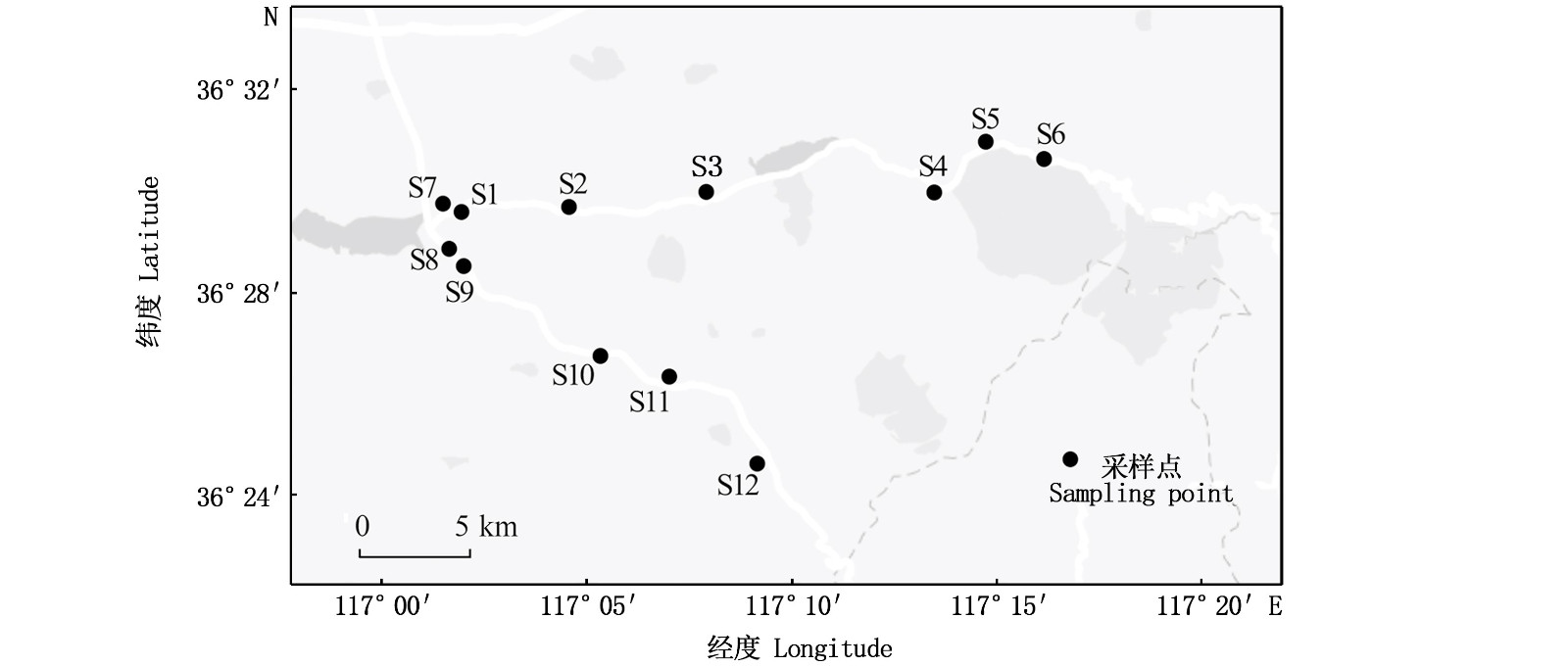
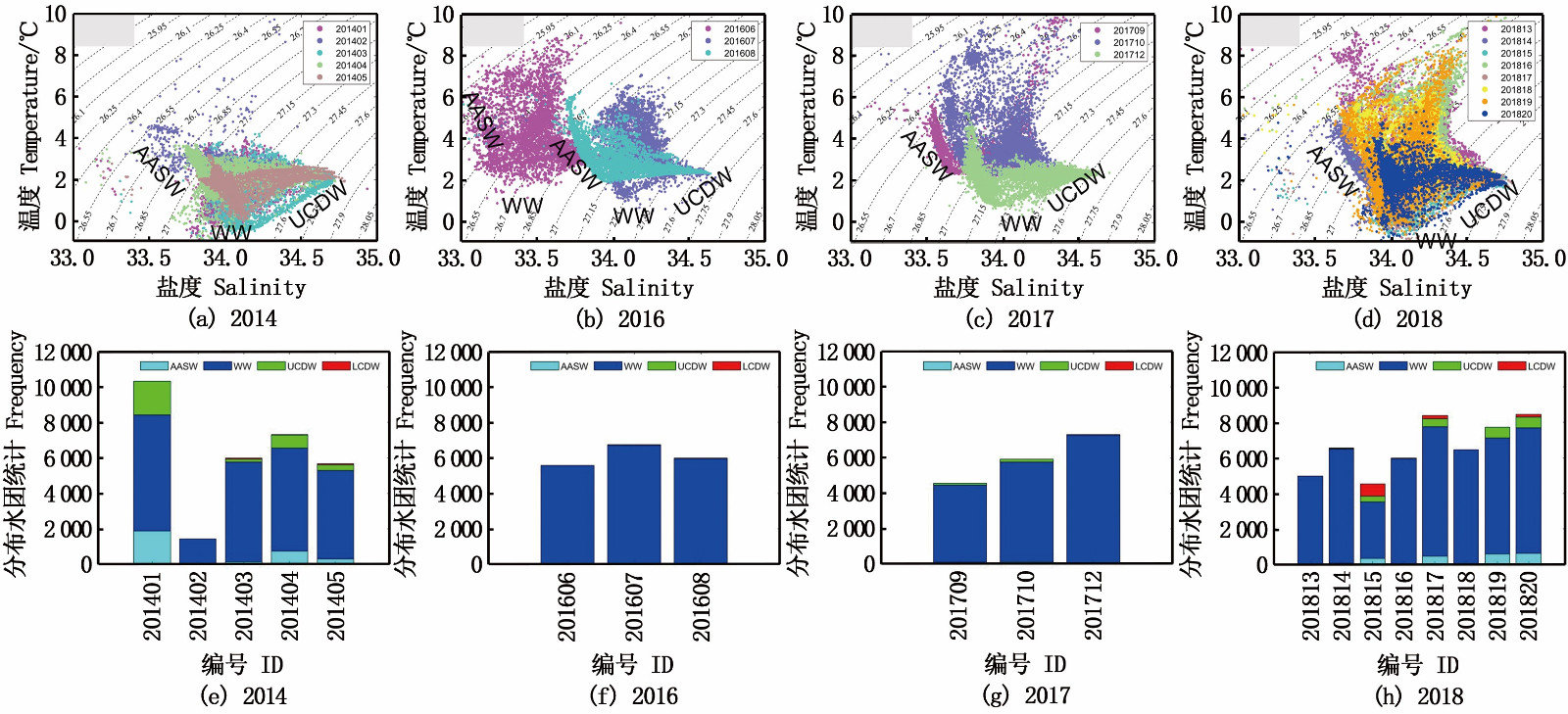
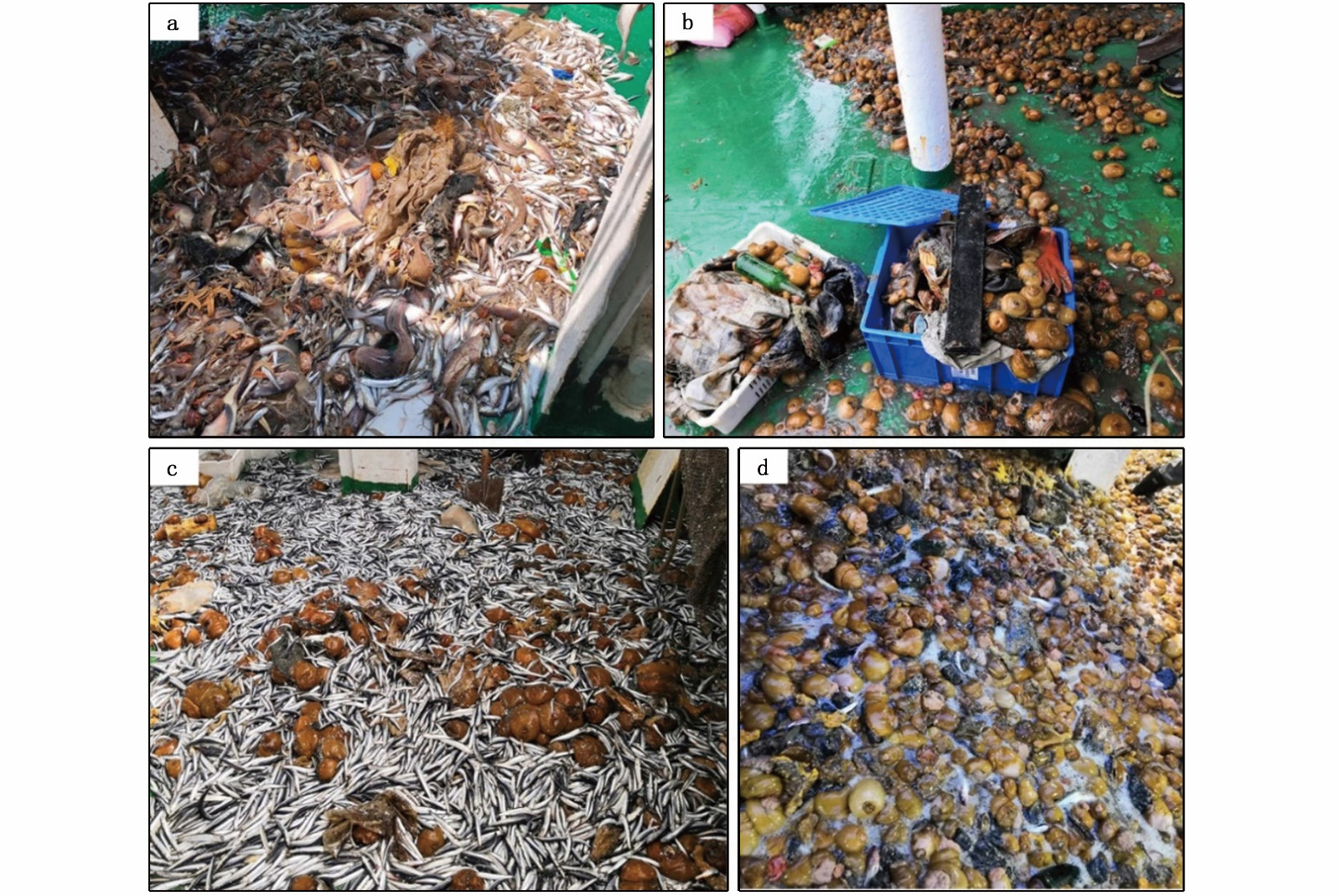
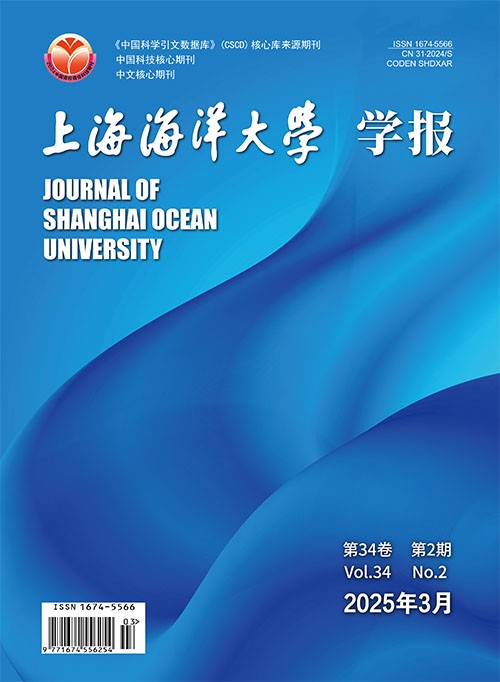
 External Links
External Links